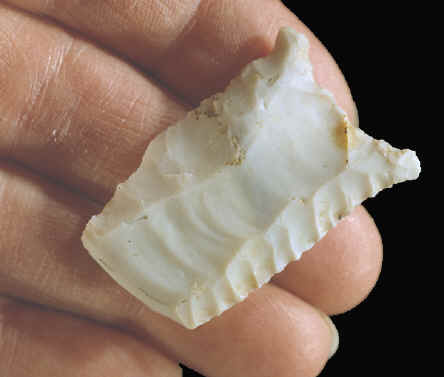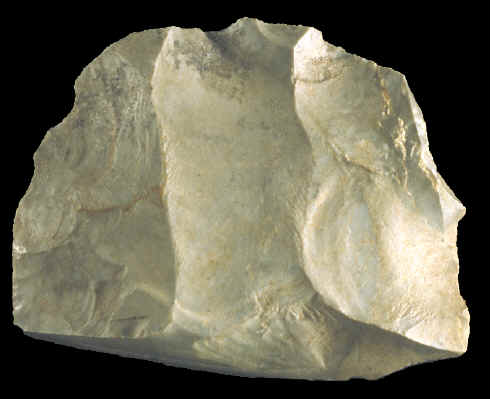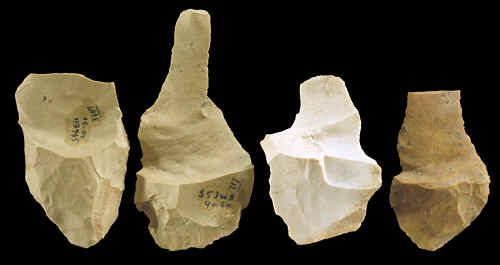|
||
|
||
|
"The (fluting) failures by Dalton knappers, as rare as they may
have been, are a potential source of confusion for stone tool
typologists. They are identical to more ancient specimens from workshops
of the Clovis Phase of the Fluted Point Tradition."---2002,
Richard Michael Gramly, PhD., "Olive Branch: A very Early Archaic
Site On The Mississippi River," p.186.
All the broken Dalton preform bases illustrated in this article, were either surface collected in cultivated fields or excavated from the Olive Branch site. Dalton points were named by Carl H. Chapman after S. P. Dalton who had collected several examples. There are many different styles of Dalton points. Some of the different types are Breckenridge, Colbert, Hardaway, Greenbrier, Sloan and Meserve. They date to the Early Archaic period 10,000 to 11,000 years ago. The Dalton Complex covers a wide area in the southeastern region of the United States. Dalton points are found in central Nebraska, Kansas, Oklahoma, Texas and eastward to the Atlantic coast to the Carolinas and south to central Florida. |
||
|
Stone tool manufacturing sites produce the most information about stone tool making technology. Of particular interest is the lithic debris from preforms broken during various stages of manufacture, like the end snapped bases illustrated in this article. More rare are unbroken preforms, in various stages of manufacture. All of these artifacts help archaeologists understand the processes involved for each sequential stage of manufacture. They also help today's lithic craftsmen duplicate precise copies of these projectile points and knives. |
||
|
A common manufacturing break pattern that is found on Clovis sites are the bases of preforms that were broken during the fluting process. Although rare, the same type of manufacturing break also occurs on Dalton sites. These broken preforms failed during the fluting process for any one of a number of different reasons. There may have been a flaw in the stone or the prepared striking platform may have been struck at the wrong angle or with to much force. Or the striking platform may not have been properly prepared, etc., etc. |
||
|
Dalton basal thinning by percussion flaking seems to have produced more hinge fractured (broken) bases on early stage preforms than on nearly finished late stage preforms. The examples found on the Olive Branch site in southern Illinois are all early stage preform breaks. They were broken from a percussion strike to a prepared platform on the base. |
||
| CONTINUE ON TO PAGE TWO | ||
|
"REFERENCES"
1974,
Goodyear, Albert C., "The Brand Site: A Techno-Functional Study of a
Dalton Site in Northeast Arkansas," pp. 22-24. |
||





